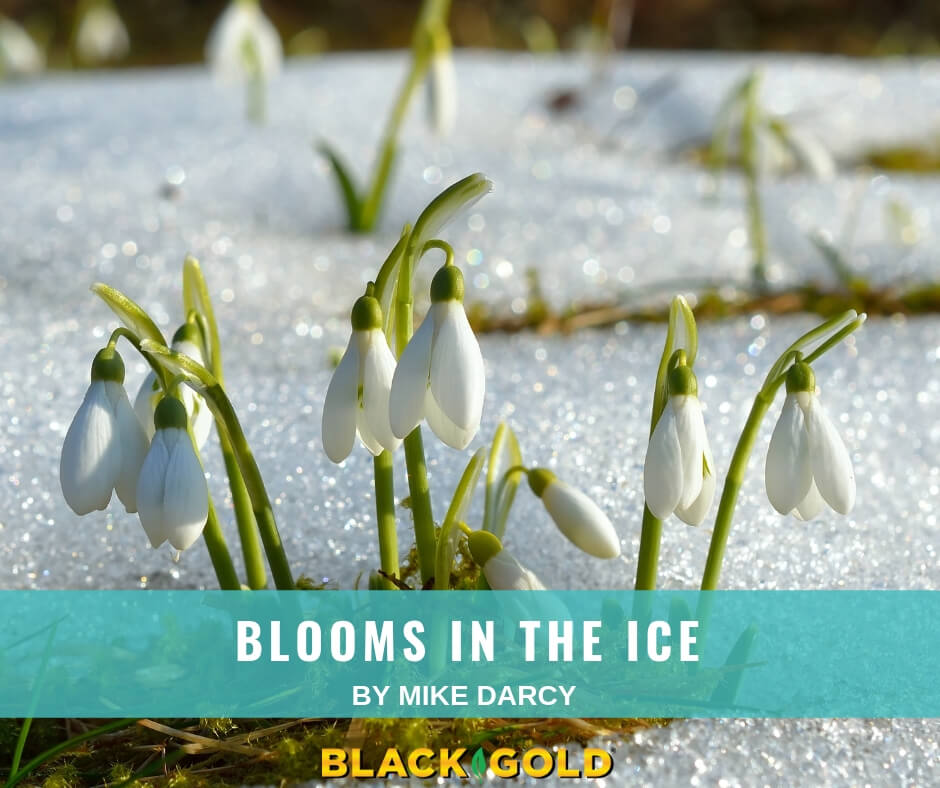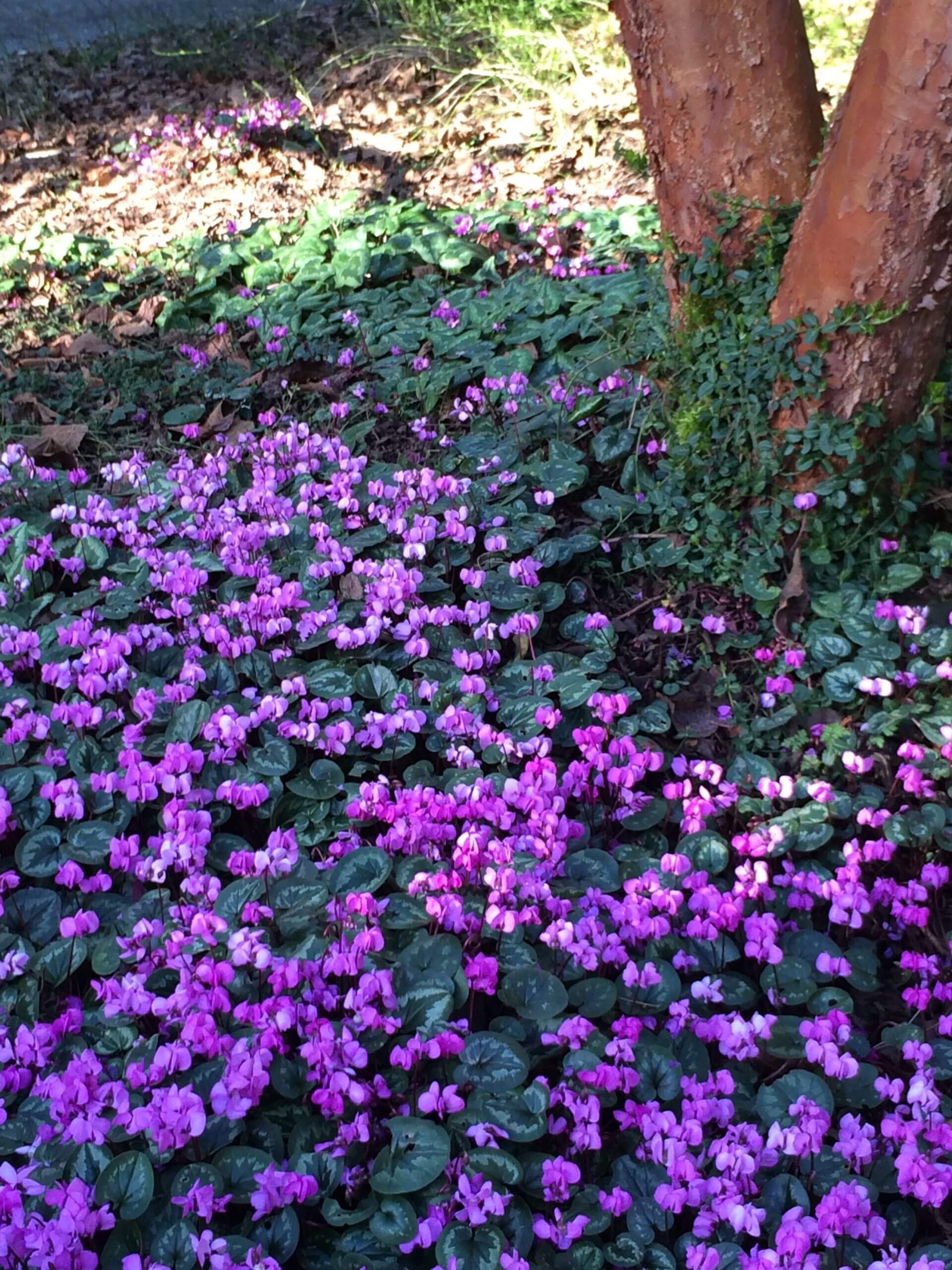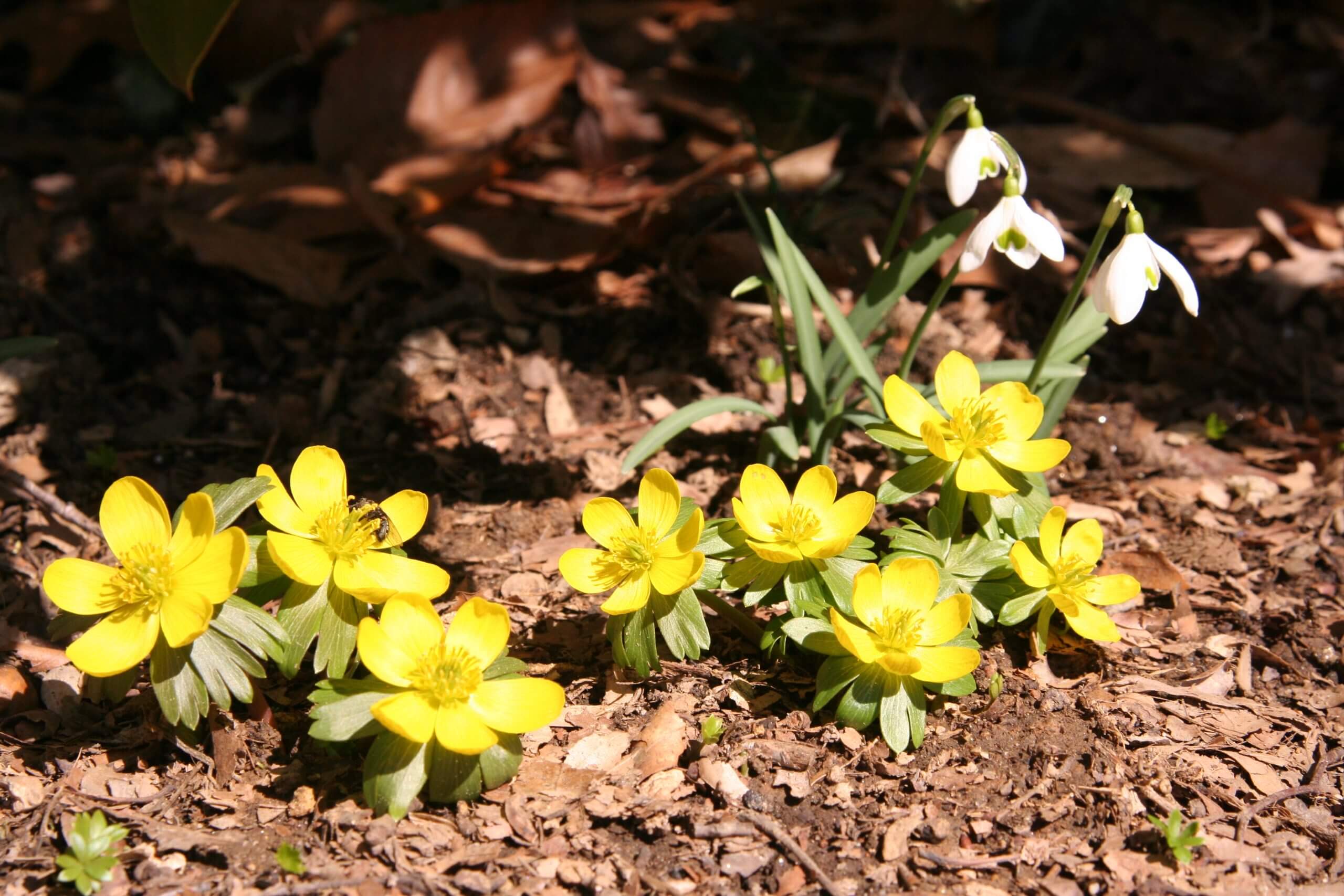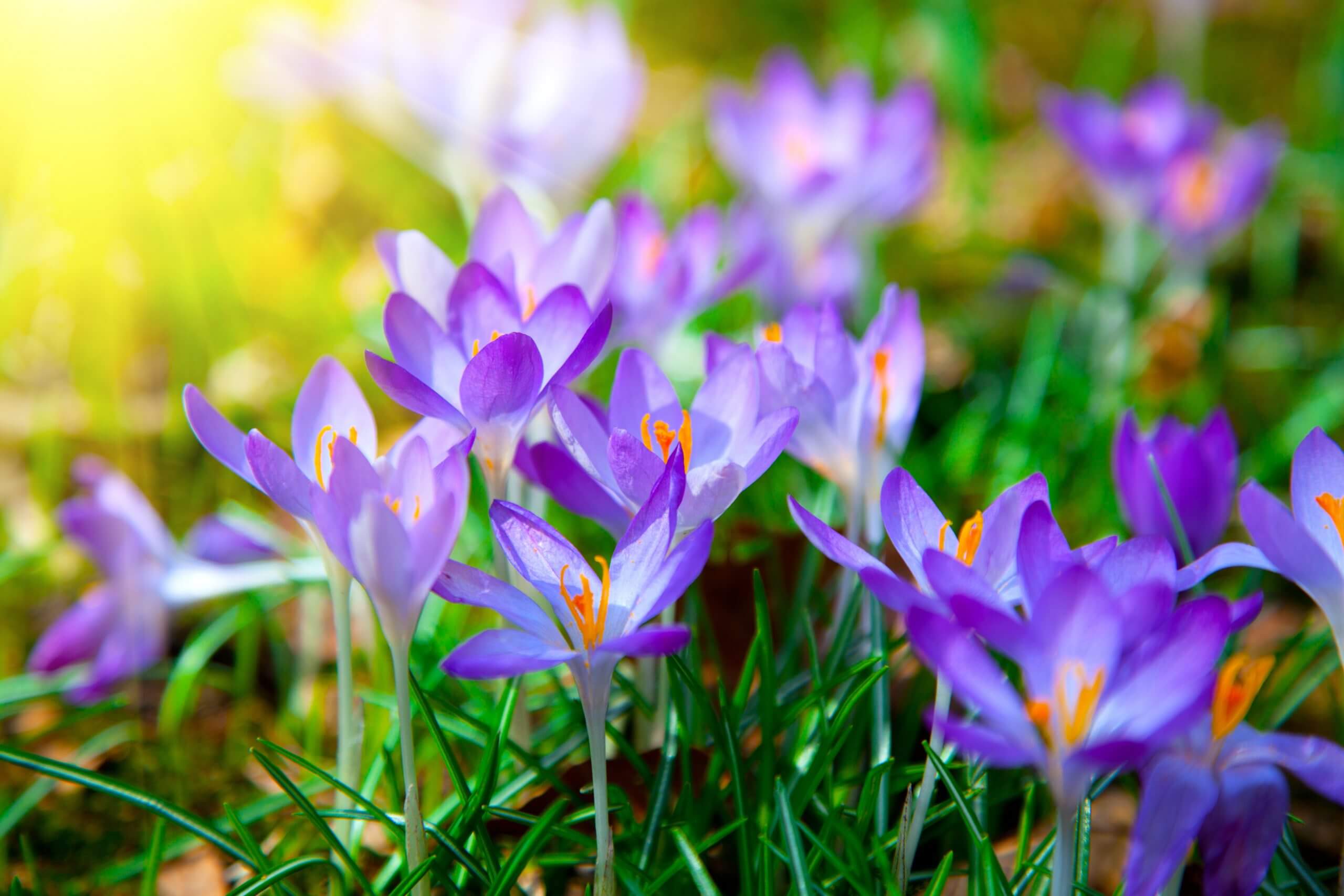
Here in the Pacific Northwest, this past November and early December were very warm and mild. My tropical red-leaf bananas did not die until a hard freeze shortly before Christmas (almost unheard of), and many gardeners had summer- and fall-blooming plants still in flower. Neighbors showed me their 3-4 inch spring daffodils that had emerged and asked if they were going to bloom for New Years! Their hopes were squelched in mid-December a sudden blast of ice, snow, and bitterly cold weather arrived. But, there are other winter-blooming bulbs that can withstand the cold and reliably bloom in snowy months.
Bulbs that perform well at this time of year are often overlooked and rarely planted. This is likely because people are generally not visiting other gardens in winter, so they do not have the opportunity to discover the beauty and diversity of winter bulbs.
Hardy Cyclamen

While not actually bulbs, the tuberous Cyclamen coum is a superb garden plant for Pacific Northwest winters. The shade-lover forms mats of attractive, heart-shaped foliage and produces many colorful flowers in shades of deepest magenta and white, that bloom in mid to late winter. Even when not in bloom, the leaves have variable colors and patterns that range from green to silver with wonderful variations in patterns of these two colors. The winter-hardy plant (USDA Hardiness Zones 7-9) survives in most areas west of the Cascades and provides a long season of bloom. (Please note that these hardy Cyclamen species are not the tender hybrid plants that you would find in a florist shop.)
Usually, garden centers will carry two hardy cyclamen (C. coum and C. hederifolium). The difference is that C. hederifolium tends to bloom in late summer and well into the fall season, with plants still showing some color in November in my neighborhood. In my garden, I grow both species and find them very easy to cultivate. Both have become naturalized under my trees, in much the same way hellebores spread. I have found that hardy Cyclamen perform best in a soil that is rich in humus or compost, and I add Black Gold Garden Compost when planting. Especially when planting Cyclamen under and around established trees. The compost helps to keep the soil from totally drying out in a hot summer.
Winter Aconite

Another winter-flowering tuber not often seen in gardens is winter aconite (Eranthis hyemalis). It is in the Ranunculus family and has single yellow flowers that look like buttercups. Plant the small tubers in the fall in soil that has been enriched with Black Gold Garden Compost. Once established, these plants will naturally spread and become reliable winter bloomers. Winter Aconite will also naturalize under trees if left undisturbed.
Snowdrops
Snowdrops (Galanthus nivalis) are some of the best-known of the winter bulbs. The very hardy true bulbs bloom as early as January and produce delicate, pendulous blooms of white dotted with green. These attract bees on warm winter days. The extremely cold-tolerant flowers are often seen peeking up from light snows, lending unique beauty to the winter garden. Over time they will also naturalize.
Early Crocus

The woodland crocus (Crocus tommasinianus) is one of the earliest crocus to bloom, often appearing in February gardens. The delicate pale purple-pink flowers create blankets of color in wooded landscapes and lawns. Once the flowers are past blooming, they will disappear until the next season.
Since the foliage of hardy cyclamen, winter aconite, snowdrops, and similar winter bloomers disappear in the summer, I would suggest adding companion plants with extended interest that grow in similar conditions. Evergreen hellebores make nice complimentary plantings. Not only do they bloom in winter, but the evergreen plants offer interesting foliage all year long.
At this time of the year, the weather can be cold and not exactly “garden friendly”, but there is still lots to see at nearby botanical gardens. A visit to your local public garden might enrich your plant palette with some unexpected winter-blooming treasures.
Happy New Year to you all, and may your gardens flourish and provide you much pleasure.
“So what’s the point? The point is to relax and enjoy gardening, remembering that nature is always in charge.” –Tony Avent, Plant Delights Nursery

